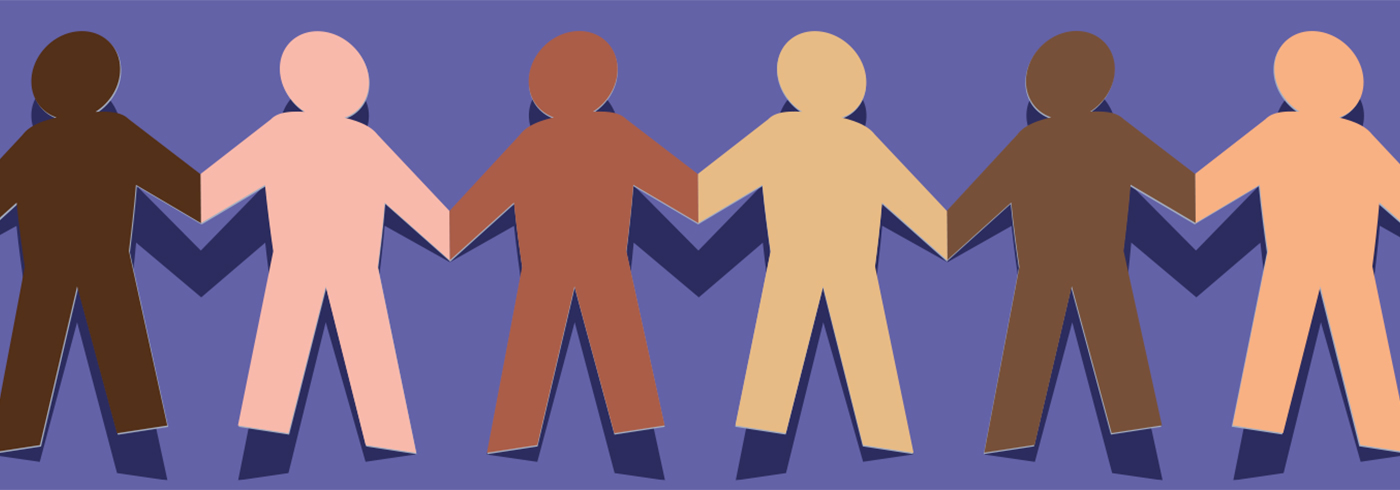In the Middle
Three ways leaders can begin the dialogue with students about racial issues
I’m a 30-year-old biracial man who was born and raised in the South, which is infamous for its history of racial tension. I’ve experienced racism, prejudice and feelings of inadequacy. I’ve encountered people who couldn’t hear me over the tone of my skin.
I grew up believing I was never white enough nor Black enough. I hated what I looked like because my life represented what some people are still afraid of: unity. This inner battle created tension I didn’t realize I would still have to navigate as a man.
As a kid I remember being asked which side I would choose if a race riot occurred. I said, “Neither. I’ll stand in the middle.”
In many respects, I still find myself in the middle. And as a youth leader, I believe many young people feel like they’re in the middle as well. They are between childhood and adulthood, passion and restraint, idealism and lived experience. They are also in the middle when it comes to racial issues, with peers of every race, ethnicity, and religious tradition.
Generation Z (those born after 1996) is the most diverse generation America has ever seen, with racial and ethnic minorities comprising nearly half the demographic, according to Pew Research Center.
The middle isn’t always a comfortable place to be. I can’t imagine what it’s like growing up in today’s culture, amid the current pressures, conflicts, crises, and division. Which is why I think it’s time we have a serious conversation with our youth about race.
Here are three ways leaders can begin the dialogue:
Listen
Unfortunately, most people listen to reply rather than listening to understand. Now is the time to listen with an open mind and willingness to learn. Do not judge those who are hurting because they don’t always know how to communicate their pain. Hear them out, empathize and pray.
Create an environment where those who are hurting feel safe opening up about what they’re experiencing.
The worst conversation we could have about race with young people is no conversation at all.
Talk
Racism is real. Prejudice is real. It’s not just a part of America’s dark history. It is a reality today’s young people see and experience. They have real questions. They want to be a part of the conversation and the solution. And they should be, so talk about it.
The worst conversation we could have about race with young people is no conversation at all. Dialogue needs to happen early, often and honestly. Offer a biblical perspective on unity.
Talk about these issues in small groups and Bible studies. Host a forum. Survey students to find out what questions they are asking. Interview people of color as part of a sermon series on racial reconciliation. Provide resources to educate students and parents on how to further those conversations at home.
Use technology. With today’s digital communication, we are more connected than ever. We are also set up like never before to mobilize and partake in the greatest advancement of the gospel the world has ever seen, and faith leaders should empower young people to lead that charge.
Live
If all our friends look like us, talk like us, and think like us, we will have a very limited perspective. Unity is not uniformity. God hasn’t called us to be just alike.
The way we live and interact with others can help our students realize the value of diversity. We can model the truth that, as Christ followers, the Lord who unites us is greater than the differences that seek to divide us.
Encourage young people not to avoid those who are different from them, but to engage with them. It’s in relationships that people begin to see all the things they have in common, rather than just the differences.
As church leaders, we are called to be in the middle — not taking sides, but pointing people to Christ.
This isn’t a Black or white issue. It’s not a skin problem; it’s a sin problem.
This isn’t a political matter. It’s a moral problem and a biblical literacy issue.
The government can’t fix it, and schools can’t turn it around. Only Jesus can change hearts.
Now is the time for real leadership, strategy and continued conversation. We are one generation away from abolishing racism. It begins with our young people, because they are in the middle.
This article originally appeared in the July/August 2020 edition of Influence magazine.
Influence Magazine & The Healthy Church Network
© 2025 Assemblies of God

